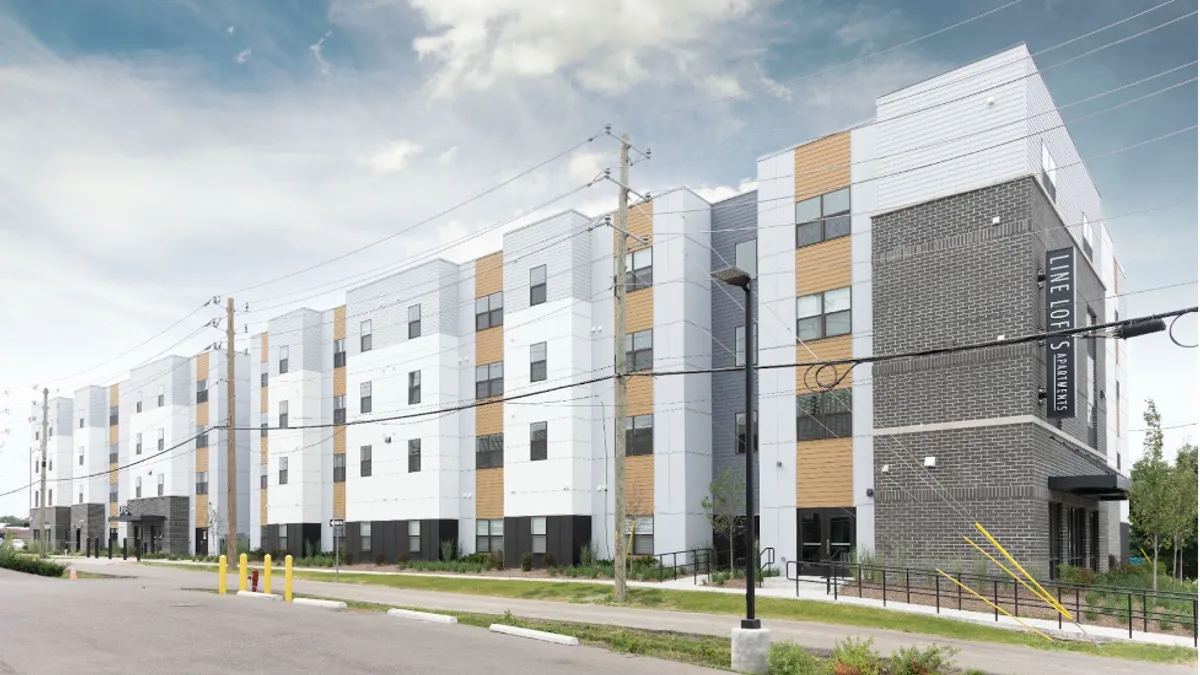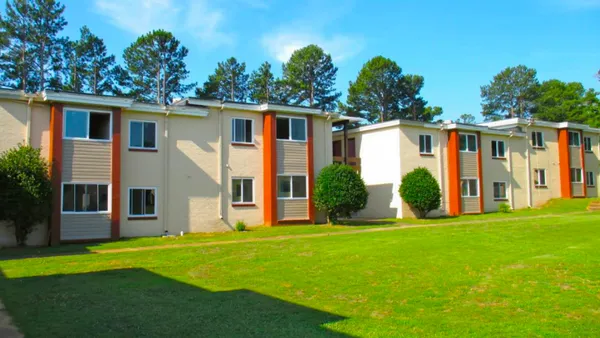Piecing together the financing for affordable housing deals can be challenging for even seasoned veterans of the development business. With sky-high construction, land and labor costs, it's nearly impossible to underwrite moderately priced housing without some help, usually from the government.
But there are some things developers can do to bridge the gap. JB Curry, president of Indianapolis, Indiana-based TWG Development, told Multifamily Dive that reducing the timeline in the land acquisition process can save costs.
“We have been working with nonprofits who realize that sometimes landowners and developers don’t always agree on the timing,” Curry said. “The design and entitlement process takes a little longer because the land seller may prefer to wait.”
These nonprofit groups can acquire land earlier than the developer typically can. “It gives us time to work through the design and work through our programming and permitting processes,” Curry said. “So that's been a huge help for us.”
Nonprofits and government agencies can be extremely important to a developer like TWG. Roughly 75% of the company’s 6,000-unit portfolio, which spans 19 states, is affordable. The company, which develops, manages and owns apartments, is active in Indiana, Iowa, Ohio, Missouri, Colorado, Arizona and Utah and has designs on moving into the Pacific Northwest.
Here, Curry talks with Multifamily Dive about rising interest rates, underwriting in uncertain times and the importance of starting in the spring.
This interview has been edited for brevity and clarity.
MULTIFAMILY DIVE: How has interest rate volatility affected your business?
JB CURRY: It has impacted the transactions we've been looking to dispose of on the market-rate side. But our partnerships with potential buyers and knowing who we're working with have been huge. So have the relationships with lenders.
Has it impacted the affordable business as much?
It has been tougher to underwrite on the affordable side of the business as we're looking to close on transactions. It has affected the capital stack slightly with our construction loans and the sizing.

We're still looking at it from a historical standpoint. Rates overall are relatively low if you look at the grand scheme of things over the last four or five decades. I know in relation to the last 10 years, they look incredibly high. So we're still working through those transactions, but it's taking a little longer to close.
Have interest rates thwarted your ability to close development deals?
The biggest thing for us is not getting too aggressive with our underwriting. For us, as a company, we've always been fairly conservative on rent growth and not assuming it will hit the high single digits or double digits. We've grown our rents closer to 2% to 3%.
We've grown expenses in the same manner. And so historically, we have tried to combat potential interest-rate growth, even though it might not have been prevalent like 30 years ago.
How are you looking at exit cap rates?
On cap rates, we're projecting what things will look like by the time we put a shovel in the ground, lease up the property and consider a disposition. We're trying to do this in the sense of plus or minus 100 basis points on the cap rate, if not more so. We have not been too aggressive in the past and, as costs have increased, we've tried to continue not to get too aggressive now.
Are the problems with material and labor costs starting to subside?
The biggest thing is staying in communication with our contractors on the jobs that we have. The more we can plan around a potential delay, the better. Seeing the single-family projections coming to a much slower pace is a big indicator with regard to the availability of the groups we can partner with on our projects.
For us, the timing to close a deal is also a big, big component. We work in a lot of cold weather climates. So here in the Midwest or out West in the Rockies, especially in Utah and Colorado, the weather really impacts when we can start certain trades. If we're able to close in the springtime when we have warmer weather and we can get on contractor schedules for certain scopes of work, that has been incredibly beneficial to the overall project success.
Click here to sign up to receive multifamily and apartment news like this article in your inbox every weekday.








